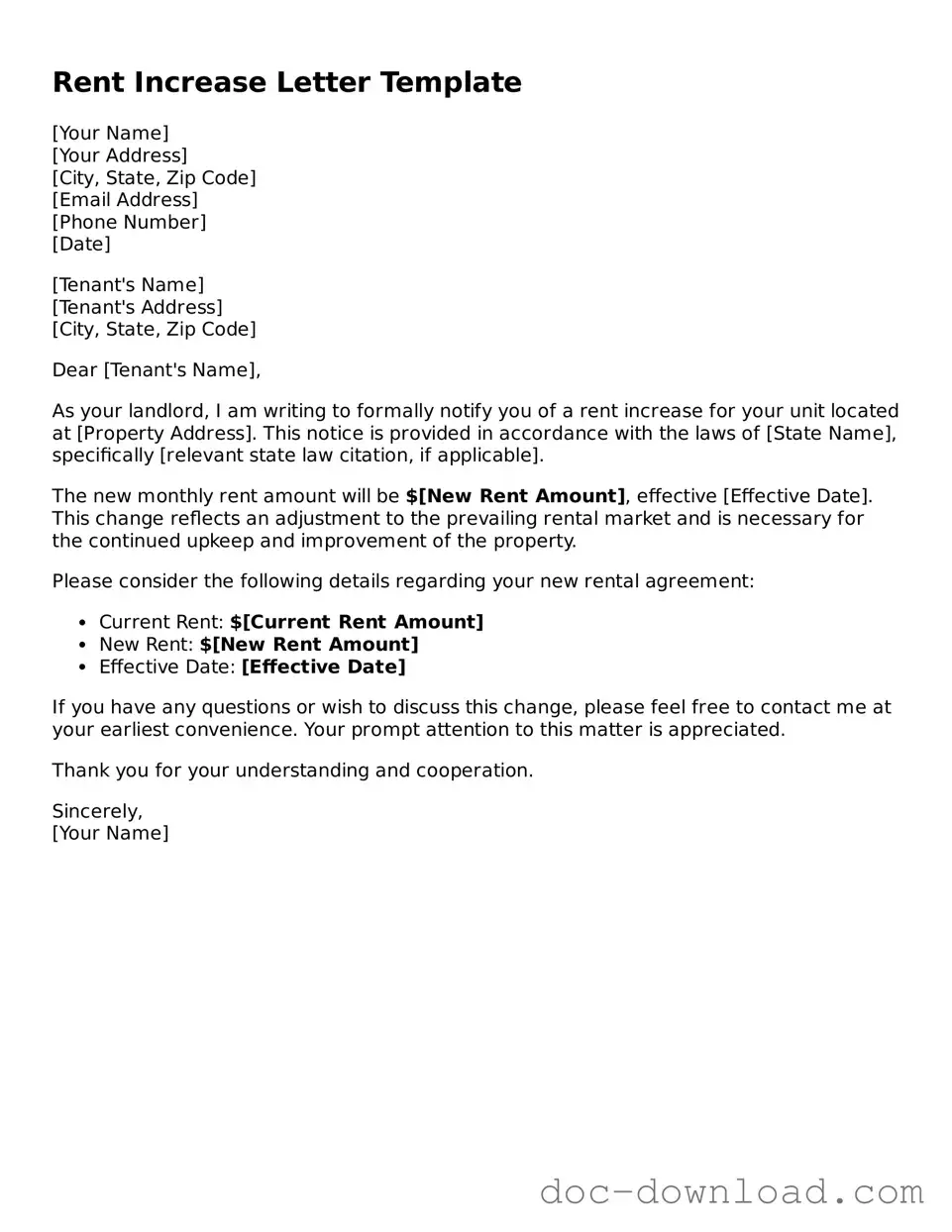The Rent Increase Letter is similar to a Lease Renewal Letter. Both documents serve as formal notifications to tenants. A Lease Renewal Letter typically outlines the terms of extending a lease, while the Rent Increase Letter specifically addresses changes in rental amounts. Both letters require clear communication to ensure tenants understand their rights and obligations moving forward.
Another related document is the Notice to Quit. This notice is used to inform tenants that they must vacate the property, often due to lease violations or non-payment. While the Rent Increase Letter seeks to modify the existing terms of a lease, the Notice to Quit is more definitive, indicating that the tenant must leave. Both documents require careful wording to avoid misunderstandings.
The Eviction Notice is also comparable. It is a legal document that informs tenants of the landlord's intention to evict them, often for non-payment or lease violations. While the Rent Increase Letter is about adjusting financial terms, the Eviction Notice is about terminating the rental agreement altogether. Both documents must adhere to local laws and regulations.
A Rent Receipt is another document that shares similarities. This receipt serves as proof of payment for rent. While the Rent Increase Letter communicates a change in rental amounts, the Rent Receipt confirms that the tenant has paid the specified amount. Both documents are essential for maintaining clear financial records between landlords and tenants.
The Security Deposit Return Letter is also relevant. This letter informs tenants about the return of their security deposit after they vacate the property. Like the Rent Increase Letter, it requires clear communication about financial matters. Both documents help establish transparency and trust in the landlord-tenant relationship.
The Move-Out Notice is another document that aligns with the Rent Increase Letter. It notifies landlords of a tenant's intention to vacate the property. While the Rent Increase Letter focuses on changes in rent, the Move-Out Notice signals an end to the rental agreement. Both documents are crucial for managing the transition process for both parties.
A Maintenance Request form is similar in that it is a communication tool used by tenants to address issues within the rental property. While the Rent Increase Letter discusses financial changes, the Maintenance Request form focuses on the condition of the property. Both documents require timely responses to ensure a positive living experience for tenants.
The Tenant Complaint Letter also shares similarities. This document allows tenants to formally express grievances about their living situation. While the Rent Increase Letter communicates a financial adjustment, the Tenant Complaint Letter addresses concerns that may affect the tenant's quality of life. Both documents foster open communication between landlords and tenants.
In navigating the complexities of landlord-tenant relationships, it is essential to have the right documentation at your fingertips, including the NJ PDF Forms that facilitate various agreements and notices. These forms help ensure that all parties are aware of their rights and responsibilities, fostering clear communication and reducing the risk of disputes. From the Lease Agreement to the Move-Out Notice, each document plays a crucial role in maintaining a healthy rental arrangement.
Lastly, the Rental Application form is relevant. This document is completed by prospective tenants seeking to rent a property. While the Rent Increase Letter pertains to existing tenants, both documents are part of the broader rental process. They establish the terms and conditions of the landlord-tenant relationship, ensuring clarity and understanding from the outset.
